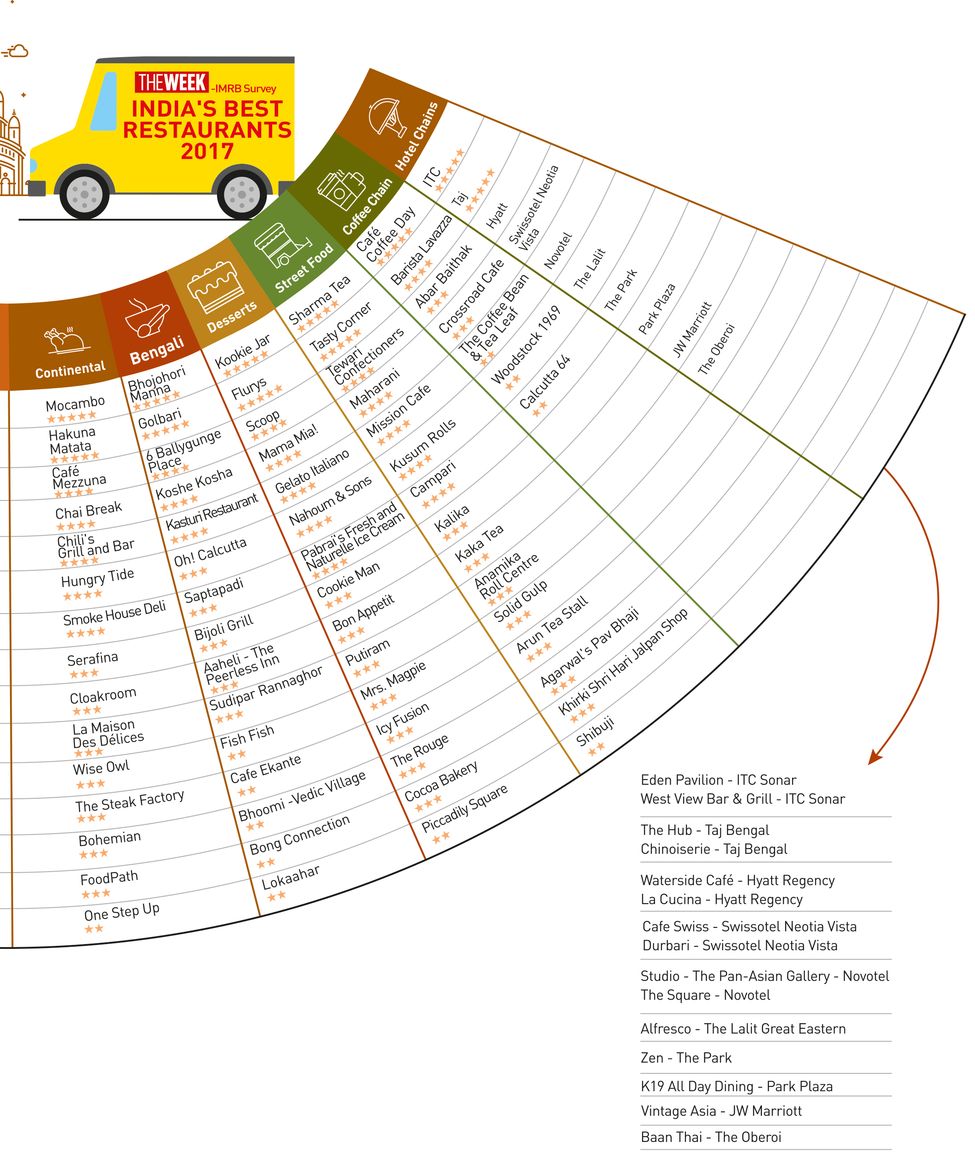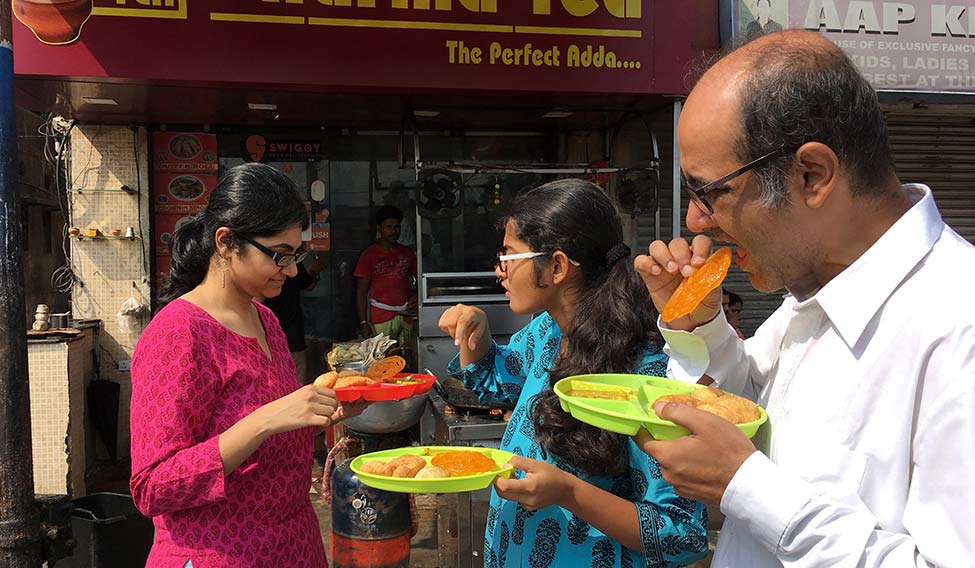One Sunday, Suryanarayan Mathur, 65, decided not to eat his regular breakfast—boring milk, cornflakes, toast or egg white. The businessman from north Kolkata’s satellite town, Salt Lake, walked to Sharma Tea Stall in Sector 1 of Salt Lake, around a kilometre away. His eyes shone when he saw the dahi vada, kochoudi and steaming jilabi. Mathur is not alone. People from all age groups and regions, including Bengalis, Marwaris, Biharis and those from UP, queue up at the restaurant from the early hours of the day. The shop, located opposite a big playground, could go unnoticed except for the rows of tables and chairs arranged on the pavement in front.
“If kochoudi, jilabi and vegetable sandwiches are our signatures in the morning, in the afternoon, we sell plenty of pakoras and rolls,” says Vinod Tiwari, an employee. The roll was perhaps invented on the streets of Kolkata, when noodles was yet to make an entry, from where it travelled to eastern and central India. Egg omelettes and chicken kebabs were wrapped in roti, with spices and salads, to make delicious rolls. Today, these rolls have made their way into the menus of famous eateries in Kolkata, and in other cities as well. But Sharma Tea Stall, being a pure vegetarian restaurant, has reinvented it with paneer and vegetables. Kolkata has a huge number of food joints like Sharma Tea Stall. The city is so much in love with tea, that it calls its snack bars tea stalls. Most dishes in Kolkata restaurants come from the street, says Nilanjan Das, a food blogger from the city. “Grilled meat, chicken, pakoras and even biryani that are being offered in Kolkata restaurants today first made their appearance on the streets,” he says. “The best example of this is rasgulla, a quintessential street food that later made its way into restaurant menus.”
Kolkata perhaps is the only city that offers a wide variety of biryani—Hyderabadi to Lucknowi and Malabari. The best biryani in Kolkata is the one from Lucknow, made in a local style. Legend goes that a persecuted nawab from Lucknow came and settled in Kidderpore, Kolkata. He brought many cooks with him but they didn’t have access to meat. So, they improvised and made biryani with egg and potatoes. The Awadhi biryani made with egg and potatoes (one can separately ask for meat) has become synonymous with Kolkata.
Decker’s Lane in Kolkata keeps alive the tradition of street food. Just like 50 years ago, even today hundreds of office- goers and students line up here to taste the chop, cutlets and noodles in Bengali style. The city has imbibed the cuisine of different cultures, just as it has welcomed people from different regions. Tibetan momos first made their appearance as the street food of Bhowanipur. Dosas, idlis and vadas, too, are street food in the city.
But, there is a sharp divide in the cuisine of north and south Kolkata. The food you get in the north is simpler and smaller, whereas the southern fare is spicier and larger. Take the golgappa or phuchka (in Bengali). In the north, you get small, crispy ones, which are tastier than the larger and spicier ones in the south. The famous restaurants and swanky food outlets are in the south, whereas the north is famous for its street food. Just like how Bengali food is bitter in the beginning and sweet in the end, the people here, too, are a little odd and unpredictable in the beginning but they grow on you, and turn charming in the end.








